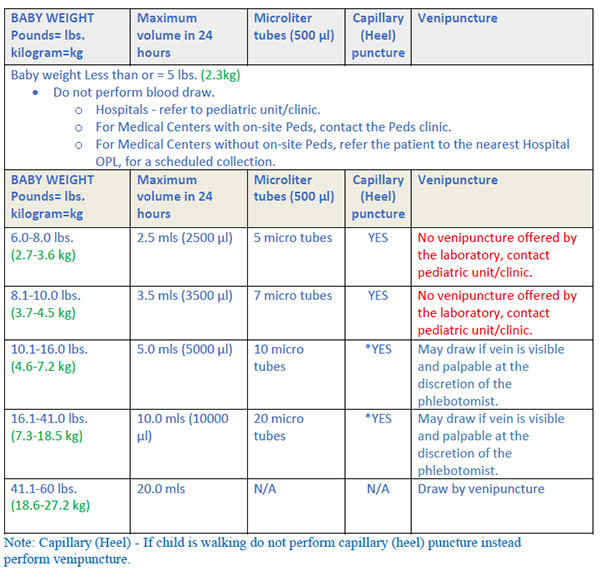PRC-PALM-SPC-5.51-pro1-prs1: OBTAINING BLOOD FROM BABIES AND CHILDREN PROCESS (print here)
PRC-PALM-SPC-5.51-pro1-prs1-stw1: OBTAINING CONSENT FOR MINORS STANDARD WORK (print here)
Infant Blood Volume Determination
Must be determined prior to heel stick/arm draw as removal of more than 10% of an infant’s blood volume in a short period of time can lead to serious consequences, such as iatrogenic anemia or cardiac arrest.
When requested to collect blood specimens from infants, phlebotomists must be able to quickly estimate blood volume to avoid harming the patient. The parent should be asked how much baby weighs. If parent unsure, check Epic or call physician’s office for approximate weight in kilograms/ pounds. See table below:

|





